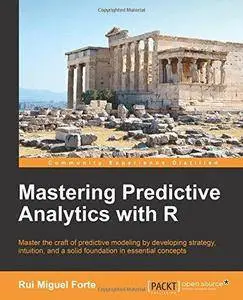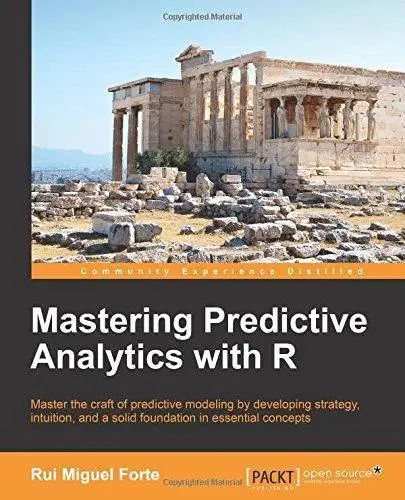Mastering Predictive Analytics with R By Rui Miguel Forte
2015 | 414 Pages | ISBN: 1783982802 | EPUB, MOBI, PDF | 23 MB
2015 | 414 Pages | ISBN: 1783982802 | EPUB, MOBI, PDF | 23 MB
Master the craft of predictive modeling by developing strategy, intuition, and a solid foundation in essential concepts Grasp the major methods of predictive modeling and move beyond black box thinking to a deeper level of understanding Leverage the flexibility and modularity of R to experiment with a range of different techniques and data types Packed with practical advice and tips explaining important concepts and best practices to help you understand quickly and easily This book is intended for the budding data scientist, predictive modeler, or quantitative analyst with only a basic exposure to R and statistics. It is also designed to be a reference for experienced professionals wanting to brush up on the details of a particular type of predictive model. Mastering Predictive Analytics with R assumes familiarity with only the fundamentals of R, such as the main data types, simple functions, and how to move data around. No prior experience with machine learning or predictive modeling is assumed, however you should have a basic understanding of statistics and calculus at a high school level. R offers a free and open source environment that is perfect for both learning and deploying predictive modeling solutions in the real world. With its constantly growing community and plethora of packages, R offers the functionality to deal with a truly vast array of problems. This book is designed to be both a guide and a reference for moving beyond the basics of predictive modeling. The book begins with a dedicated chapter on the language of models and the predictive modeling process. Each subsequent chapter tackles a particular type of model, such as neural networks, and focuses on the three important questions of how the model works, how to use R to train it, and how to measure and assess its performance using real world data sets. By the end of this book, you will have explored and tested the most popular modeling techniques in use on real world data sets and mastered a diverse range of techniques in predictive analytics.



